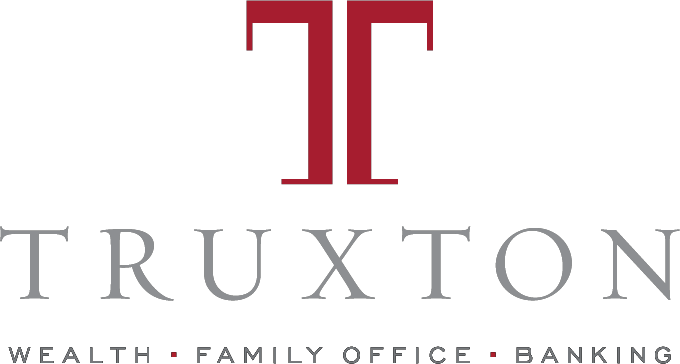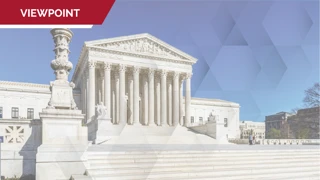From Sunset to Strategy: Navigating the New Tax Law (OBBBA vs. TCJA)

What’s permanent, what’s new, and how the One Big Beautiful Bill Act reshapes the post‑TCJA landscape for families, business owners, and philanthropies.
If you thought 2026 would bring higher individual rates, lower exemptions, and expiring business incentives, think again. The One Big Beautiful Bill Act (OBBBA) freezes many TCJA-era benefits in place—and adds new, temporary deductions that create a 2025–2028 “planning sprint.” Families and founder-led businesses should re-run their models now.
Quick Take
-
TCJA (Tax Cuts and Jobs Act) individual rate cuts are now permanent, with an extra year of inflation adjustment for the 10%, 12%, and 22% brackets.
-
The standard deduction is permanently higher—$31,500 (joint), $23,625 (HOH), $15,750 (single) in 2025, indexed thereafter.
-
Estate tax exemption is locked in at $30M (joint) / $15M (single), indexed from 2026—well above the previously scheduled 2026 “cliff.”
-
199A (QBI) is permanent and modestly expanded (including a $400 minimum deduction).
-
100% bonus depreciation and EBITDA-based interest limits are back—permanently.
-
Temporary, targeted individual deductions (2025–2028) for seniors, tips, overtime, and auto loan interest (U.S.-assembled cars) create near-term planning windows.
-
Green energy credits for individuals sunset quickly (repealed after 2025 or within one year of enactment).
-
SALT cap relief is short-lived—temporarily raised and then phased, with AGI-based phaseouts for higher earners.
-
Charitable giving gets tighter with a 0.5% floor on itemized deductions and a new above-the-line $1,000 ($2,000 joint) deduction.
Why It Matters
You’ve likely planned around TCJA’s 2026 sunset for years. That clock just stopped. It’s time to recast your multi-year plan—income acceleration/deferral, gifting schedules, business capex, charitable strategy, and trust design all need a second look.
Comparison Table: Current Law vs. New Law (Post-2025)
| Category | Provision | Current Law | New Law |
|---|---|---|---|
| Individual | Tax Brackets | Rates revert to pre-TCJA levels after 2025 | Make TCJA rates permanent; increased inflation adjustment for 10%, 12% & 22% brackets |
| Standard Deduction | Reverts to pre-TCJA levels after 2025 | Permanent increase: $31,500 (joint), $23,625 (HOH), $15,750 (single), inflation adjusted | |
| Personal Exemption | Eliminated by TCJA; returns post-2025 | Makes elimination permanent | |
| Senior Deduction | None | Temporary $6,000 per senior (2025–2028); phaseout at $75K MAGI | |
| Child Tax Credit | $2,000, reverts to $1,000 after 2025 | Permanent $2,200 in 2026, indexed thereafter | |
| Mortgage Interest Deduction Cap | $750,000 cap expires after 2025 | Makes $750,000 cap permanent | |
| SALT Deduction Cap | $10,000 cap expires after 2025 | Temporarily raise to $40K in 2025; increase 1% annually through 2029; flat $10K after (AGI phaseout > $500K) | |
| Itemized Deduction Value Cap | No limitation | Cap value at 35% for top tax bracket | |
| Misc. Itemized Deductions | Many suspended under TCJA | Make suspensions permanent (incl. Pease, moving expenses, etc.) | |
| AMT Exemption | Reverts to pre-TCJA levels after 2025 | Make current exemption permanent; revert phaseout to 2018 levels; increase phaseout rate | |
| Charitable Deduction Floor | None | Add 0.5% floor on itemized charitable deductions | |
| Charitable Deduction (Above the Line) | Suspended | $1,000 ($2,000 joint) above-the-line deduction permanently | |
| Green Energy Credits (Individuals) | EV & energy-efficiency credits available | Repeal after 2025 or within 1 year of enactment | |
| Tip Income Deduction | Not deductible | Temporarily allow up to $25,000 (2025–2028); phases out above $150K/$300K AGI | |
| Overtime Premium Deduction | Not deductible | Deductible up to $12,500 ($25,000 joint), 2025–2028; phases out above $150K/$300K AGI | |
| Auto Loan Interest | Not deductible | Deductible for U.S.-assembled new cars (2025–2028); up to $10,000; phaseout at $100K/$200K | |
| Estate & Gift | Estate Tax Exemption | ~$13.6M in 2024, halves in 2026 | Permanently set at $15M single / $30M joint, indexed from 2026 |
| Business | R&D Expensing | Capitalization and amortization required | Permanently restore immediate expensing; retroactive for small firms |
| Interest Deduction Limit | EBIT-based limit | Reinstate EBITDA-based limit permanently | |
| Bonus Depreciation | Phasing down | Permanently restore 100% bonus depreciation | |
| Expensing of Structures | Not available | 100% expensing for structures (2025–2029 construction; in service by 2031) | |
| Section 199A (Pass-Through) | Expires after 2025 | Make permanent; raise phase-in thresholds; $400 minimum QBI deduction | |
| Corp. Charitable Deduction Floor | None | 1% minimum contribution floor | |
| Section 179 Expensing Cap | ~$1.22M cap | Raise to $2.5M cap; phaseout starts at $4M | |
| Tax Exempt Entities | College Endowment Tax | 1.4% flat rate | New bracketed structure; top rate 8%; exempts schools under 3,000 FT students |
Who Wins (and Who Should Revisit Their Plan)
Potential Winners
-
Business owners: Permanent 199A, 100% bonus depreciation, EBITDA-based 163(j) limit, Sec. 179 expansion.
-
High-net-worth families: Estate exemption certainty (no 2026 cliff), permanent lower individual rates.
-
Seniors (2025–2028): $6,000 deduction per qualifying individual.
-
Pass-through entities: QBI locked in and friendlier interest limitations.
Potential Losers / Watch Areas
-
High earners in high-tax states: Only temporary SALT cap relief, with AGI phaseouts.
-
Charitably inclined taxpayers: 0.5% floor on itemized gifts and value caps reduce marginal benefit.
-
Universities with large endowments: Higher, bracketed endowment tax exposure.
-
Green energy-focused individual taxpayers: Credit repeals reduce incentives quickly.
Planning Moves to Consider
“For many of the families and operators we serve, the real shift isn’t just what got extended—it’s the mix of permanent certainty and short-term opportunities between now and 2028. We’re encouraging clients to front-load deductions, optimize basis step-up strategies, and lock in business expensing while it’s unequivocally available.”
- Peter Deming, CPA
Truxton Wealth
2025-2028 "Window" Tactics
-
Front-load deductible overtime/tip/auto interest items where applicable.
-
Capitalize on 100% structure expensing for construction started in 2025–2029 and placed in service by 2031.
-
Bunch charitable gifts to clear the 0.5% floor efficiently (consider DAFs and CRTs).
-
Lock in business interest & depreciation strategies while rules are unequivocally favorable.
Longer Term (Permanent Rule Set)
-
Rebuild your estate plan around the permanent $30M/$15M exemption and step-up optimization.
-
Re-underwrite entity choice (S corp vs. partnership vs. C corp) under permanent QBI + bonus depreciation dynamics.
-
Review AMT exposure with the phaseout shift back to 2018 mechanics.
Now that these provisions are in effect—or will be soon—it is an ideal time to revisit your tax and estate planning strategies. Some changes may create near-term opportunities, while others could carry longer-term implications for wealth transfer, charitable giving, or business investment. At Truxton Wealth, we are committed to helping you navigate these developments with clarity and purpose.
Let’s revisit your plan. Your Truxton team can quantify impacts, re-stage transactions, and make sure you capture the temporary windows while aligning with the new permanent baseline. Please contact your advisor to discuss how the new law may impact your goals and to consider appropriate planning steps for the months and years ahead. ▪



